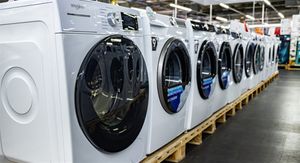
The semiconductor industry, the bedrock of our digital age, is at a critical inflection point. Driven by the explosive growth of Artificial Intelligence (AI) and its insatiable demand for processing power, the industry is confronting its colossal environmental footprint head-on. Sustainable semiconductor manufacturing is no longer a niche concern but a central pillar for the future of AI. This urgent pivot involves a paradigm shift towards eco-friendly practices and groundbreaking innovations aimed at drastically reducing the environmental impact of producing the very chips that power our intelligent future.
The immediate significance of this sustainability drive cannot be overstated. AI chips, particularly advanced GPUs and specialized AI accelerators, are far more powerful and energy-intensive to manufacture and operate than traditional chips. The electricity consumption for AI chip manufacturing alone soared over 350% year-on-year from 2023 to 2024, reaching nearly 984 GWh, with global emissions from this usage quadrupling. By 2030, this demand could reach 37,238 GWh, potentially surpassing Ireland's total electricity consumption. This escalating environmental cost, coupled with increasing regulatory pressure and corporate responsibility, is compelling manufacturers to integrate sustainability at every stage, from design to disposal, ensuring that the advancement of AI does not come at an irreparable cost to our planet.
Engineering a Greener Future: Innovations in Sustainable Chip Production
The journey towards sustainable semiconductor manufacturing is paved with a multitude of technological advancements and refined practices, fundamentally departing from traditional, resource-intensive methods. These innovations span energy efficiency, water recycling, chemical reduction, and material science.
In terms of energy efficiency, traditional fabs are notorious energy hogs, consuming as much power as small cities. New approaches include integrating renewable energy sources like solar and wind power, with companies like TSMC (the world's largest contract chipmaker) aiming for 100% renewable energy by 2050, and Intel (a leading semiconductor manufacturer) achieving 93% renewable energy use globally by 2022. Waste heat recovery systems are becoming crucial, capturing and converting excess heat from processes into usable energy, significantly reducing reliance on external power. Furthermore, energy-efficient chip design focuses on creating architectures that consume less power during operation, while AI and machine learning optimize manufacturing processes in real-time, controlling energy consumption, predicting maintenance, and reducing waste, thus improving overall efficiency.
Water conservation is another critical area. Semiconductor manufacturing requires millions of gallons of ultra-pure water daily, comparable to the consumption of a city of 60,000 people. Modern fabs are implementing advanced water reclamation systems (closed-loop water systems) that treat and purify wastewater for reuse, drastically reducing fresh water intake. Techniques like reverse osmosis, ultra-filtration, and ion exchange are employed to achieve ultra-pure water quality. Wastewater segregation at the source allows for more efficient treatment, and process optimizations, such as minimizing rinse times, further contribute to water savings. Innovations like ozonated water cleaning also reduce the need for traditional chemical-based cleaning.
Chemical reduction addresses the industry's reliance on hazardous materials. Traditional methods often used aggressive chemicals and solvents, leading to significant waste and emissions. The shift now involves green chemistry principles, exploring less toxic alternatives, and solvent recycling systems that filter and purify solvents for reuse. Low-impact etching techniques replace harmful chemicals like perfluorinated compounds (PFCs) with plasma-based or aqueous solutions, reducing toxic emissions. Non-toxic and greener cleaning solutions, such as ozone cleaning and water-based agents, are replacing petroleum-based solvents. Moreover, efforts are underway to reduce high global warming potential (GWP) gases and explore Direct Air Capture (DAC) at fabs to recycle carbon.
Finally, material innovations are reshaping the industry. Beyond traditional silicon, new semiconductor materials like Gallium Nitride (GaN) and Silicon Carbide (SiC) offer improved efficiency and performance, especially in power electronics. The industry is embracing circular economy initiatives through silicon wafer recycling, where used wafers are refurbished and reintroduced into the manufacturing cycle. Advanced methods are being developed to recover valuable rare metals (e.g., gallium, indium) from electronic waste, often aided by AI-powered sorting. Maskless lithography and bottom-up lithography techniques like directed self-assembly also reduce material waste and processing steps, marking a significant departure from conventional linear manufacturing models.
Corporate Champions and Competitive Shifts in the Sustainable Era
The drive towards sustainable semiconductor manufacturing is creating new competitive landscapes, with major AI and tech companies leading the charge and strategically positioning themselves for the future. This shift is not merely about environmental compliance but about securing supply chains, optimizing costs, enhancing brand reputation, and attracting top talent.
Intel (a leading semiconductor manufacturer) stands out as a pioneer, with decades of investment in green manufacturing, aiming for net-zero greenhouse gas emissions by 2040 and net-positive water by 2030. Intel's commitment to 93% renewable electricity globally underscores its leadership. Similarly, TSMC (Taiwan Semiconductor Manufacturing Company), the world's largest contract chipmaker, is a major player, committed to 100% renewable energy by 2050 and leveraging AI-powered systems for energy saving and defect classification. Samsung (a global technology conglomerate) is also deeply invested, implementing Life Cycle Assessment systems, utilizing Regenerative Catalytic Systems for emissions, and applying AI across DRAM design and foundry operations to enhance productivity and quality.
NVIDIA (a leading designer of GPUs and AI platforms), while not a primary manufacturer, focuses on reducing its environmental impact through energy-efficient data center technologies and responsible sourcing. NVIDIA aims for carbon neutrality by 2025 and utilizes AI platforms like NVIDIA Jetson to optimize factory processes and chip design. Google (a multinational technology company), a significant designer and consumer of AI chips (TPUs), has made substantial progress in making its TPUs more carbon-efficient, with its latest generation, Trillium, achieving three times the carbon efficiency of earlier versions. Google's commitment extends to running its data centers on increasingly carbon-free energy.
The competitive implications are significant. Companies prioritizing sustainable manufacturing often build more resilient supply chains, mitigating risks from resource scarcity and geopolitical tensions. Energy-efficient processes and waste reduction directly lead to lower operational costs, translating into competitive pricing or increased profit margins. A strong commitment to sustainability also enhances brand reputation and customer loyalty, attracting environmentally conscious consumers and investors. However, this shift can also bring short-term disruptions, such as increased initial investment costs for facility upgrades, potential shifts in chip design favoring new architectures, and the need for rigorous supply chain adjustments to ensure partners meet sustainability standards. Companies that embrace "Green AI" – minimizing AI's environmental footprint through energy-efficient hardware and renewable energy – are gaining a strategic advantage in a market increasingly demanding responsible technology.
A Broader Canvas: AI, Sustainability, and Societal Transformation
The integration of sustainable practices into semiconductor manufacturing holds profound wider significance, reshaping the broader AI landscape, impacting society, and setting new benchmarks for technological responsibility. It signals a critical evolution in how we view technological progress, moving beyond mere performance to encompass environmental and ethical stewardship.
Environmentally, the semiconductor industry's footprint is immense: consuming vast quantities of water (e.g., 789 million cubic meters globally in 2021) and energy (149 billion kWh globally in 2021), with projections for significant increases, particularly due to AI demand. This energy often comes from fossil fuels, contributing heavily to greenhouse gas emissions. Sustainable manufacturing directly addresses these concerns through resource optimization, energy efficiency, waste reduction, and the development of sustainable materials. AI itself plays a crucial role here, optimizing real-time resource consumption and accelerating the development of greener processes.
Societally, this shift has far-reaching implications. It can enhance geopolitical stability and supply chain resilience by reducing reliance on concentrated, vulnerable production hubs. Initiatives like the U.S. CHIPS for America program, which aims to bolster domestic production and foster technological sovereignty, are intrinsically linked to sustainable practices. Ethical labor practices throughout the supply chain are also gaining scrutiny, with AI tools potentially monitoring working conditions. Economically, adopting sustainable practices can lead to cost savings, enhanced efficiency, and improved regulatory compliance, driving innovation in green technologies. Furthermore, by enabling more energy-efficient AI hardware, it can help bridge the digital divide, making advanced AI applications more accessible in remote or underserved regions.
However, potential concerns remain. The high initial costs of implementing AI technologies and upgrading to sustainable equipment can be a barrier. The technological complexity of integrating AI algorithms into intricate manufacturing processes requires skilled personnel. Data privacy and security are also paramount with vast amounts of data generated. A significant challenge is the rebound effect: while AI improves efficiency, the ever-increasing demand for AI computing power can offset these gains. Despite sustainability efforts, carbon emissions from semiconductor manufacturing are predicted to grow by 8.3% through 2030, reaching 277 million metric tons of CO2e.
Compared to previous AI milestones, this era marks a pivotal shift from a "performance-first" to a "sustainable-performance" paradigm. Earlier AI breakthroughs focused on scaling capabilities, with sustainability often an afterthought. Today, with the climate crisis undeniable, sustainability is a foundational design principle. This also represents a unique moment where AI is being leveraged as a solution for its own environmental impact, optimizing manufacturing and designing energy-efficient chips. This integrated responsibility, involving broader stakeholder engagement from governments to industry consortia, defines a new chapter in AI history, where its advancement is intrinsically linked to its ecological footprint.
The Horizon: Charting the Future of Green Silicon
The trajectory of sustainable semiconductor manufacturing points towards both immediate, actionable improvements and transformative long-term visions, promising a future where AI's power is harmonized with environmental responsibility. Experts predict a dynamic evolution driven by continuous innovation and strategic collaboration.
In the near term, we can expect intensified efforts in GHG emission reduction through advanced gas abatement and the adoption of less harmful gases. The integration of renewable energy will accelerate, with more companies signing Power Purchase Agreements (PPAs) and setting ambitious carbon-neutral targets. Water conservation will see stricter regulations and widespread deployment of advanced recycling and treatment systems, with some facilities aiming to become "net water positive." There will be a stronger emphasis on sustainable material sourcing and green chemistry, alongside continued focus on energy-efficient chip design and AI-driven manufacturing optimization for real-time efficiency and predictive maintenance.
The long-term developments envision a complete shift towards a circular economy for AI hardware, emphasizing the recycling, reusing, and repurposing of materials, including valuable rare metals from e-waste. This will involve advanced water and waste management aiming for significantly higher recycling rates and minimizing hazardous chemical usage. A full transition of semiconductor factories to 100% renewable energy sources is the ultimate goal, with exploration of cleaner alternatives like hydrogen. Research will intensify into novel materials (e.g., wood or plant-based polymers) and processes like advanced lithography (e.g., Beyond EUV) to reduce steps, materials, and energy. Crucially, AI and machine learning will be deeply embedded for continuous optimization across the entire manufacturing lifecycle, from design to end-of-life management.
These advancements will underpin critical applications, enabling the green economy transition by powering energy-efficient computing for cloud, 5G, and advanced AI. Sustainably manufactured chips will drive innovation in advanced electronics for consumer devices, automotive, healthcare, and industrial automation. They are particularly crucial for the increasingly complex and powerful chips needed for advanced AI and quantum computing.
However, significant challenges persist. The inherent high resource consumption of semiconductor manufacturing, the reliance on hazardous materials, and the complexity of Scope 3 emissions across intricate supply chains remain hurdles. The high cost of green manufacturing and regulatory disparities across regions also need to be addressed. Furthermore, the increasing emissions from advanced technologies like AI, with GPU-based AI accelerators alone projected to cause a 16x increase in CO2e emissions by 2030, present a constant battle against the "rebound effect."
Experts predict that despite efforts, carbon emissions from semiconductor manufacturing will continue to grow in the short term due to surging demand. However, leading chipmakers will announce more ambitious net-zero targets, and there will be a year-over-year decline in average water and energy intensity. Smart manufacturing and AI are seen as indispensable enablers, optimizing resource usage and predicting maintenance. A comprehensive global decarbonization framework, alongside continued innovation in materials, processes, and industry collaboration, is deemed essential. The future hinges on effective governance and expanding partner ecosystems to enhance sustainability across the entire value chain.
A New Era of Responsible AI: The Road Ahead
The journey towards sustainable semiconductor manufacturing for AI represents more than just an industry upgrade; it is a fundamental redefinition of technological progress. The key takeaway is clear: AI, while a significant driver of environmental impact through its hardware demands, is also proving to be an indispensable tool in mitigating that very impact. This symbiotic relationship—where AI optimizes its own creation process to be greener—marks a pivotal moment in AI history, shifting the narrative from unbridled innovation to responsible and sustainable advancement.
This development's significance in AI history cannot be overstated. It signifies a maturation of the AI industry, moving beyond a singular focus on computational power to embrace a holistic view that includes ecological and ethical responsibilities. The long-term impact promises a more resilient, resource-efficient, and ethically sound AI ecosystem. We are likely to see a full circular economy for AI hardware, inherently energy-efficient AI architectures (like neuromorphic computing), a greater push towards decentralized and edge AI to reduce centralized data center loads, and a deep integration of AI into every stage of the hardware lifecycle. This trajectory aims to create an AI that is not only powerful but also harmonized with environmental imperatives, fostering innovation within planetary boundaries.
In the coming weeks and months, several indicators will signal the pace and direction of this green revolution. Watch for new policy and funding announcements from governments, particularly those focused on AI-powered sustainable material development. Monitor investment and M&A activity in the semiconductor sector, especially for expansions in advanced manufacturing capacity driven by AI demand. Keep an eye on technological breakthroughs in energy-efficient chip designs, cooling solutions, and sustainable materials, as well as new industry collaborations and the establishment of global sustainability standards. Finally, scrutinize the ESG reports and corporate commitments from major semiconductor and AI companies; their ambitious targets and the actual progress made will be crucial benchmarks for the industry's commitment to a truly sustainable future.
This content is intended for informational purposes only and represents analysis of current AI developments.
TokenRing AI delivers enterprise-grade solutions for multi-agent AI workflow orchestration, AI-powered development tools, and seamless remote collaboration platforms.
For more information, visit https://www.tokenring.ai/.






